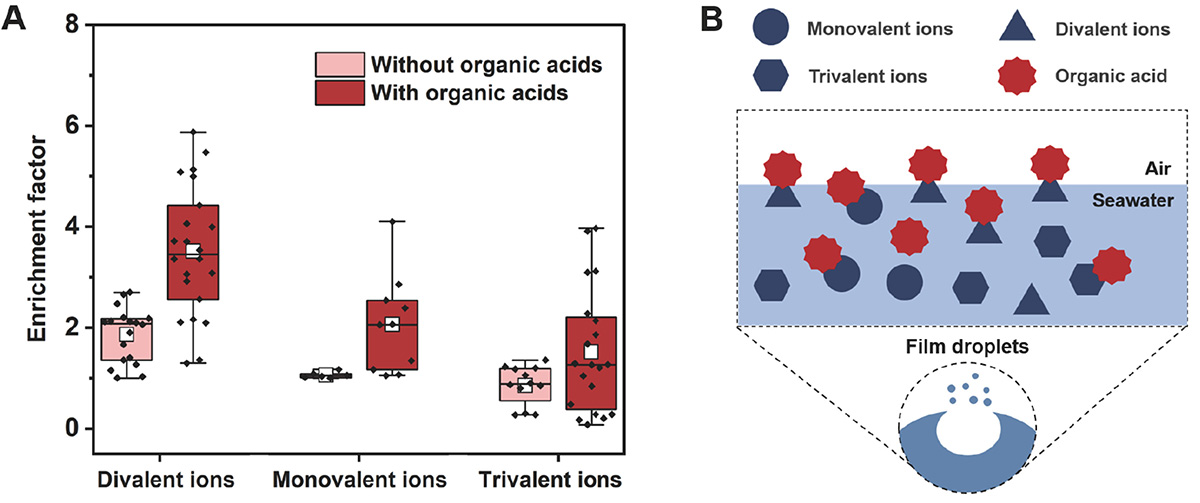Figure 4

Download original image
(A) Box-and-whisker plots of EF variations of divalent, monovalent, and trivalent ions, both with and without organic acids. The horizontal line and white dot inside the box indicate the median and mean, respectively. The vertical hinges represent data points from the lower to the upper quartile (i.e., the 25th and 75th percentiles). The whiskers represent data points from the 1st to the 99th percentile. (B) Cartoon representation of organic acids along with the metal ions within the bubble film. Divalent metal ions at the air-water interface are more efficiently transferred into the aerosol phase compared to the trivalent and monovalent metal ions present in the bulk solution away from the interface. Strong interactions between organic acids and divalent metal ions at the air-sea interface result in their greater enrichment in the resulting SSA particles.
Current usage metrics show cumulative count of Article Views (full-text article views including HTML views, PDF and ePub downloads, according to the available data) and Abstracts Views on Vision4Press platform.
Data correspond to usage on the plateform after 2015. The current usage metrics is available 48-96 hours after online publication and is updated daily on week days.
Initial download of the metrics may take a while.

